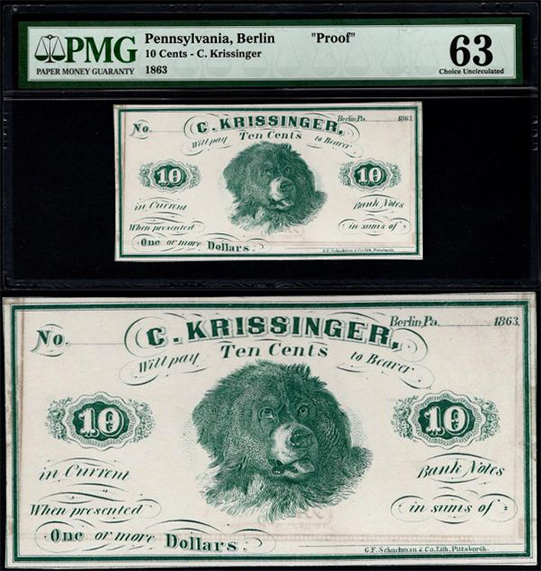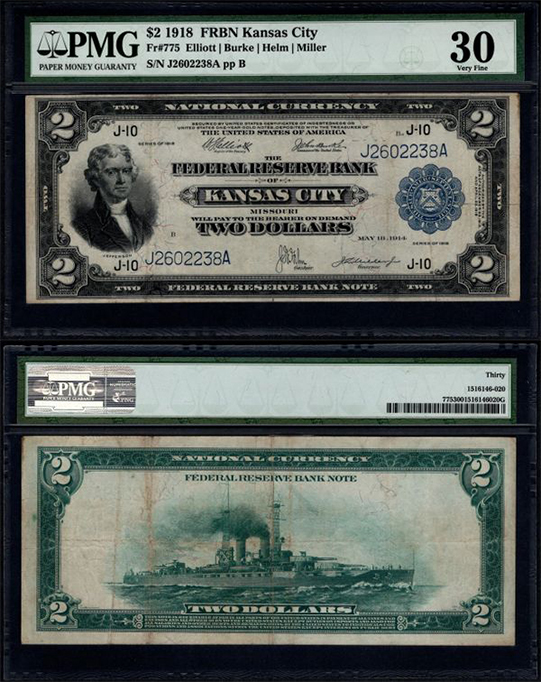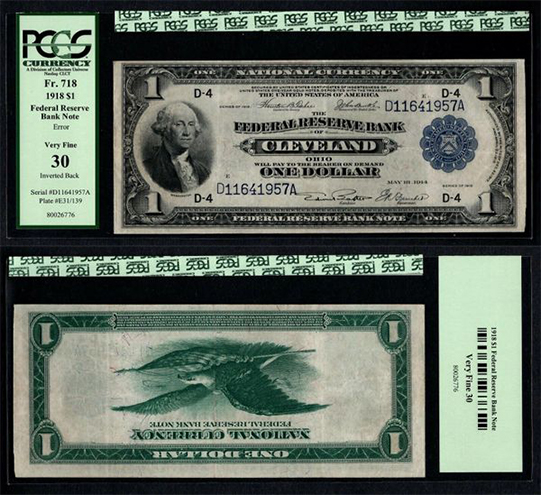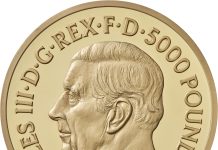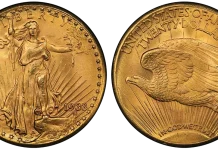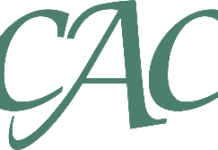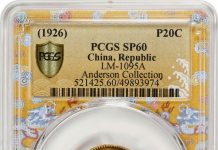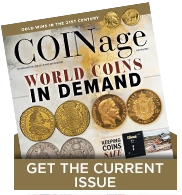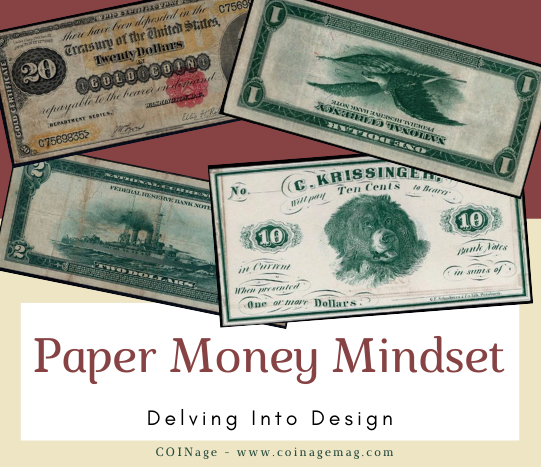
By Antoinette Rahn
I had a difficult time selecting just one note to explore in this week’s column, so I selected five from the available inventory at www.unitedstatespapermoney.com — a COINage advertising partner. The focus of my examination is the design of the vignettes featured on each, and by relation some fascinating facts about the notes and subjects featured as well. They say the devil is in the details, but as numismatics shows us, so too are the dollars. Each photo is courtesy of www.unitedstatespapermoney.com.
1863 Ten Cents C. Krissinger Berlin Pennsylvania PROOF Note PMG 63
At the center of this proof banknote, the vignette features what looks like man’s best friend, or perhaps a grizzly bear. Those enchanting eyes throw me for a loop a little. I like to think this may be the family pet of the Krissinger clan.
According to historical documents I found, it appears a C. Krissinger operated the only foundry in Berlin, Pennsylvania, around the same time (1863) this note was issued. Ten cents is still ten cents, and with an adorable or ominous figure illustrated on this note, I’d like to think this piece of “scratch” was a topic of conversation.
1864 $100 T-65 Confederate Currency PMG55 Lucy Pickens Civil War Note
While the subject of greater inclusion of historical women’s portraits on U.S. coins has been a hot topic, on and off, for years, U.S. currency has its share of that discussion as well. However, the likenesses of a few women have appeared on notes since the country began issuing currency, and one was a woman whose moniker was unforgettable, “queen of the Confederacy,” or the “uncrowned queen of the Confederacy.”
The woman, Lucy Pettway Holcombe Pickens, was born in Tennessee and grew up in Pennsylvania. She published a book at the age of 17, traveled the world over as the wife of a diplomat (a post her beloved reportedly sought as terms of marriage to Lady Lucy – as she came to be known), and worked to support the effort of the Confederacy during the Civil War, according to information published at www.tnvacation.com. Whew….that’s a lot of…influence. So much so her likeness appears on the one-dollar Confederate currency of 1862 and 1863, and of course, the $100 bill of 1864.
1918 $2 Kansas City FRBN Battleship Note PMG30
This example of the Series of 1918 $2 “Battleship Notes” features an elegant image of a ship navigating the waters. Although it’s reported that some thought the engraved vignette was meant to be generic in nature, according to many, it not only “looks a lot like” the USS New York, it is one and the same. Did you know this naval ship weighed 27,000 tons and was the leader among the U.S. Navy’s New York team of battleships? It was commissioned in 1914, again four years before this federal reserve note, and it was the first U.S. warship to carry the new-at-the-time 14-inch guns, doing battle in World War I and World War II, according to information published at GovMint.com.
In terms of the note itself, it is considered a “horse blanket” federal reserve banknote, which in basic terms means it’s a large-size note. Not large enough to cover the back of a horse beneath the saddle, but you get the idea. Also, the 1918 $2 Federal Reserve Bank notes were the last of the large-size two-dollar bills issued by the U.S., according to GovMint.com.
1882 $20 Gold Certificate PMG 15
The 1882 $20 Gold Certificate is a perfect example of how sometimes the “dollars are in the details.” As many experts in the paper money industry will explain, when it comes to this currency specimen, the seal and signature are where it’s at when determining if an example is rare or common, affordable or valuable. The seal variations include a red seal, a brown seal, and a large seal that is brown in color, according to information presented at antiquebanknotes.com.
While the most common color of the seal is red, around only 500 or so are said to exist still. The other important factor is the signature, of which there are four variations. The rarest of these is the Bruce-Gilfillan hand-signed signature with a countersignature opposite. James Garfield’s portrait on the front is imposing, and the vignette on the reverse with a bald eagle on a perch with its wings raised poised to take flight is breathtaking.
1918 $1 Error Inverted Back Cleveland FRBN PCGS 30
Some of the most obvious “mistakes” can become the greatest source of joy and perhaps financial gain. That’s a well-known truth in numismatic circles, where error coins and notes have a following all their own. They are also known to generate media attention when a particularly unique error crosses the auction block or is discovered in a collection, shop, or an entirely unexpected out-of-the-way place.
I’m not entirely sure where this 1918 $1 federal reserve banknote was found, but I can only imagine the thought running through the discoverer’s mind when they saw the inverted vignette on the reverse. There is no question, eagles are majestic and wonderful creatures, as the vignette reveals, but I’m uncertain how skilled they may be at flying upside down. No matter, the inverted back on this banknote makes it a truly uncommon find. Three cheers for mistakes!

